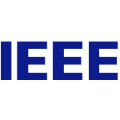Ambient radio frequency (RF) energy harvesting (EH) technology is key to realize self-sustainable, always-on, low-power, massive Internet of Things networks. Typically, rigid (non-adaptable to channel fluctuations) multi-antenna receive architectures are proposed to support reliable EH operation. Herein, we introduce a dynamic RF combining architecture for ambient RF EH use cases, and exemplify the attainable performance gains via three simple mechanisms, namely, brute force (BF), sequential testing (ST) and codebook based (CB). Among the proposed mechanisms, BF demands the highest power consumption, while CB requires the highest-resolution phase shifters, thus tipping the scales in favor of ST. Finally, we show that the performance gains of ST over a rigid RF combining scheme increase with the number of receive antennas and energy transmitters' deployment density.
翻译:常温无线电频率(RF)能源收集技术是实现自持、始终运行、低功率、大规模Things互联网网络的关键。 通常,为了支持可靠的 EH 操作,建议采用硬性(无法适应频道波动)多ANVNA接收结构。 在这里,我们引入了动态的RF组合环境RF EH使用案例结构,并通过三个简单的机制,即布鲁特力、连续测试和基于代码库(CB)来展示可实现的绩效收益。 在拟议的机制中,BF要求最高电耗,而CB要求最高分辨率级转换器,从而向ST倾斜比例。 最后,我们表明ST的性能收益超过僵硬的RF组合计划,将接收天线和能量发射机的部署密度与接收天线和能量发射机数量相结合。



